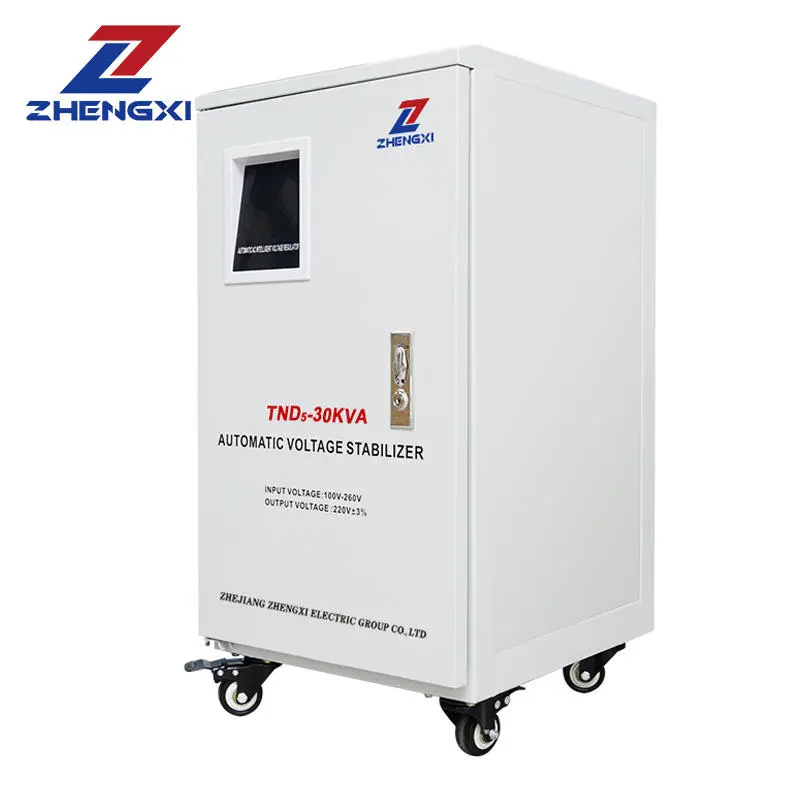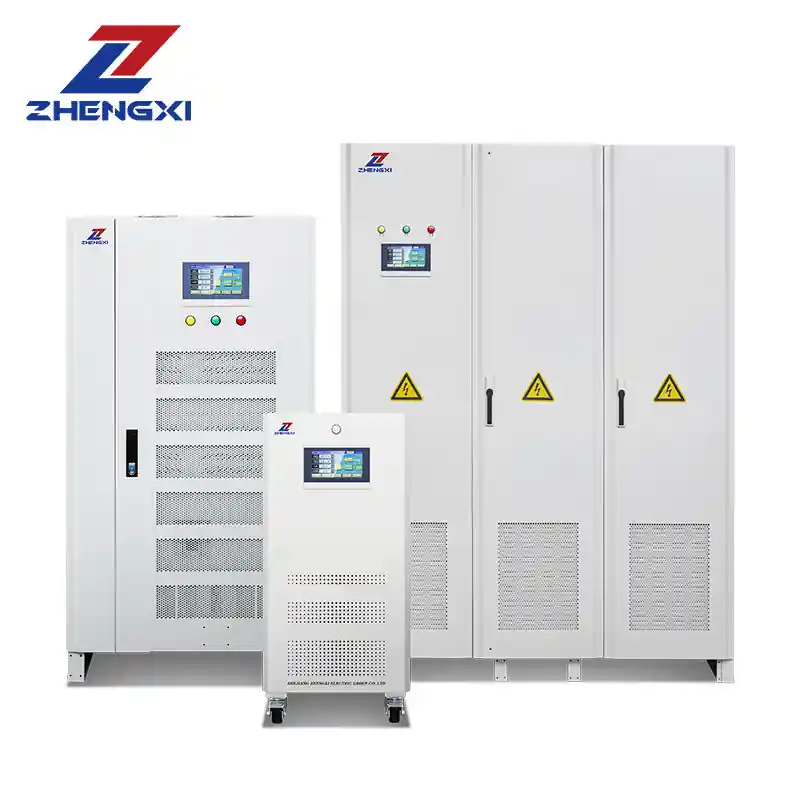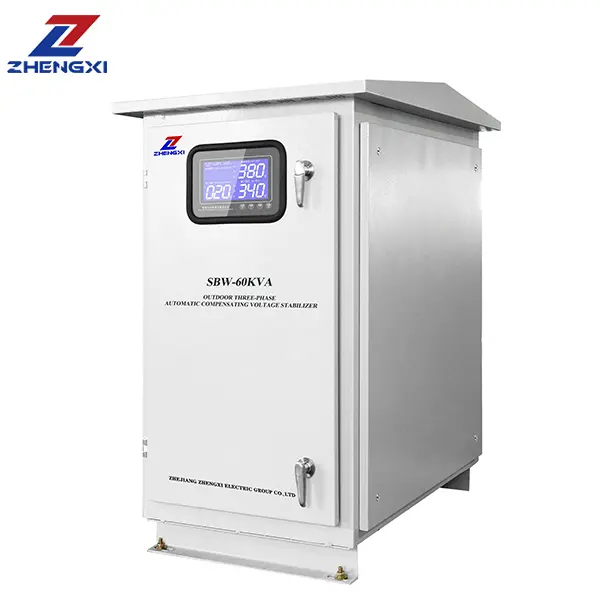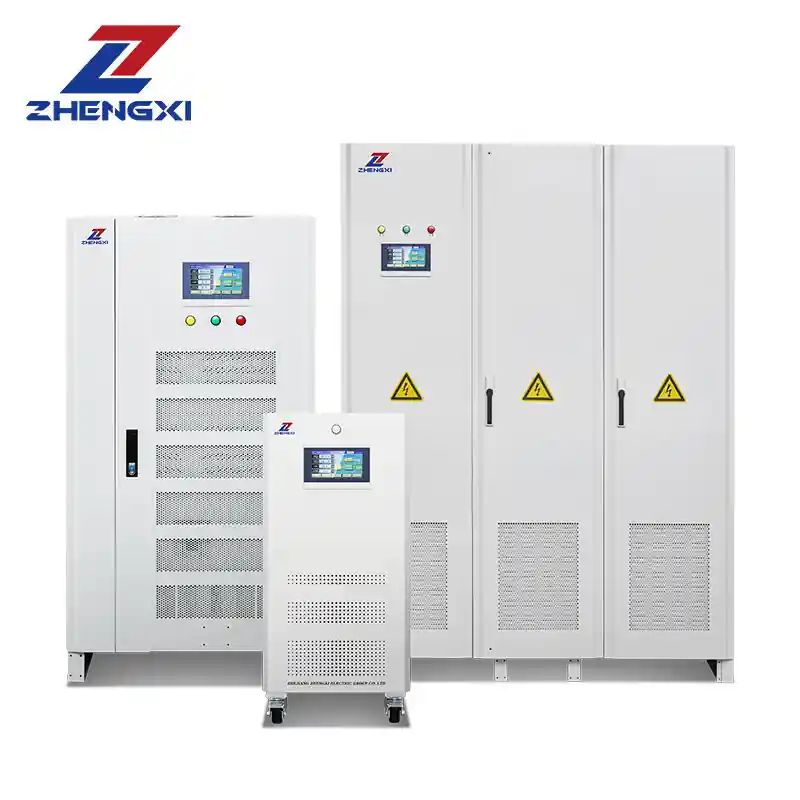Maintaining stable power in three‑phase networks is essential for industries, commercial buildings, and sensitive machinery. A three‑phase AC‑voltage regulator system—also known as a three‑phase voltage stabilizer—ensures smooth, balanced voltage delivery, protecting equipment from damaging fluctuations. In this post, we’ll explore how these systems work, their main benefits, key installation tips, and answer your most pressing questions.
Understanding Three‑Phase Voltage Regulation
Three‑phase power is the backbone of modern industrial operations and large commercial setups. However, wide voltage swings—caused by grid disturbances or heavy load changes—can lead to motor overheating, electronic failures, and unplanned downtime. A servo‑controlled three‑phase AC‑voltage regulator constantly monitors each phase (L1, L2, L3) and dynamically corrects deviations, delivering consistent output (commonly 380 V or 400 V) to your equipment.
How a Three‑Phase AC‑Voltage Regulator Works
- Voltage Sensing: Built‑in sensors sample incoming voltage on all three lines in real time.
- Control Unit Analysis: A microprocessor compares sensed values against the nominal set point, typically within a ±3 % tolerance.
- Servo‑Driven Tap Changer: If the voltage strays outside acceptable bounds, a servo motor shifts transformer taps up or down to adjust output.
- Balanced Output: Corrected voltage is fed to downstream loads, ensuring motors, drives, and control systems run without interruption.
This closed‑loop mechanism reacts within milliseconds, making it perfect for environments with frequent load variations or weak grid conditions.
Core Benefits for Your Facility
- Enhanced Equipment Protection: Guards critical machinery—like CNC machines or HVAC compressors—against under‑ and over‑voltage damage.
- Improved Energy Efficiency: By stabilizing voltage, motors draw optimal current, reducing power waste and operational costs.
- Phase Balance Assurance: Eliminates phase‐to‐phase imbalance, preventing motor vibration and premature wear.
- Minimal Downtime: Integrated bypass switches enable “hot” maintenance without shutting down key processes.
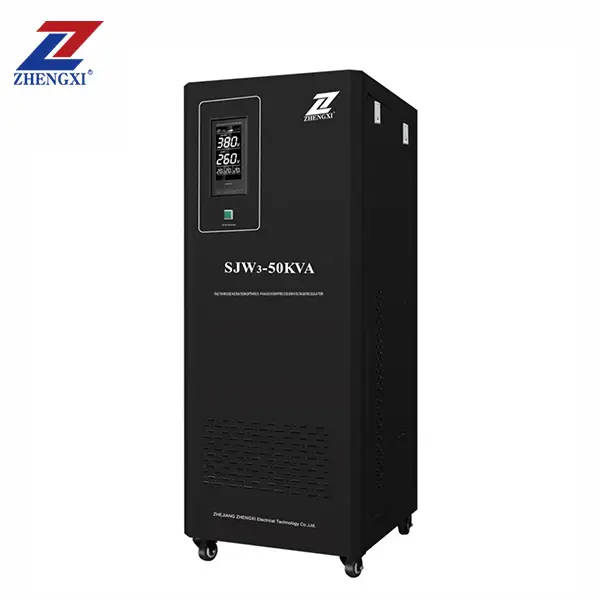
SJW 3 Phase Industrial Servo Voltage Stabilizer
Installation Considerations
- Site Selection: Mount the regulator in a clean, dry, and well‑ventilated space close to the main distribution board to minimize wiring runs and voltage drop.
- Grounding Protocol: Ensure all earth connections follow local electrical codes and bond the regulator’s ground terminal to your facility’s grounding network.
- Cable Sizing: Use copper conductors sized according to the full‑load amperage; slightly oversize to account for potential load increases.
- Bypass Configuration: Test manual or automatic bypass operations regularly to confirm you can isolate the regulator without interrupting power.
- Control Setup: Program nominal voltage, phase-sequence, and tolerance parameters in the digital controller to match regional standards (e.g., 380 V ±5 %).
Maintenance Best Practices
- Quarterly Checks: Inspect terminals for tightness, clean dust from heat sinks, and verify ventilation pathways are clear.
- Annual Calibration: Confirm sensor accuracy and adjust control set points if necessary.
- Servo Mechanism Care: Lubricate moving parts according to manufacturer guidelines to prevent stiction or sluggish response.
- Bypass Validation: Operate bypass under no‑load conditions to ensure seamless activation during emergencies or servicing.
FAQs
Q1: How do I choose the right capacity for my three‑phase regulator?
Add up the total kVA of your three‑phase loads, include a 20 % safety margin, and select a regulator rated accordingly—this prevents overload during peak demand.
Q2: Can a three‑phase regulator handle high motor inrush currents?
Yes. Look for models specifically designed for large starting currents, often featuring reinforced transformer banks and robust servo drives.
Q3: What response time should I expect?
Quality regulators adjust voltage deviations within 10–50 ms, effectively eliminating perceptible flicker or voltage sag impacts.
Q4: Should I install surge protection alongside the regulator?
Absolutely. A dedicated surge protector guards against lightning strikes and extreme transients that lie beyond the regulator’s correction range.
Conclusion
A three‑phase AC‑voltage regulator system is a strategic investment for any operation relying on three‑phase power. By understanding its operation, following careful installation practices, and committing to regular maintenance, you’ll protect critical assets, optimize energy use, and minimize downtime—ultimately boosting productivity and peace of mind.


